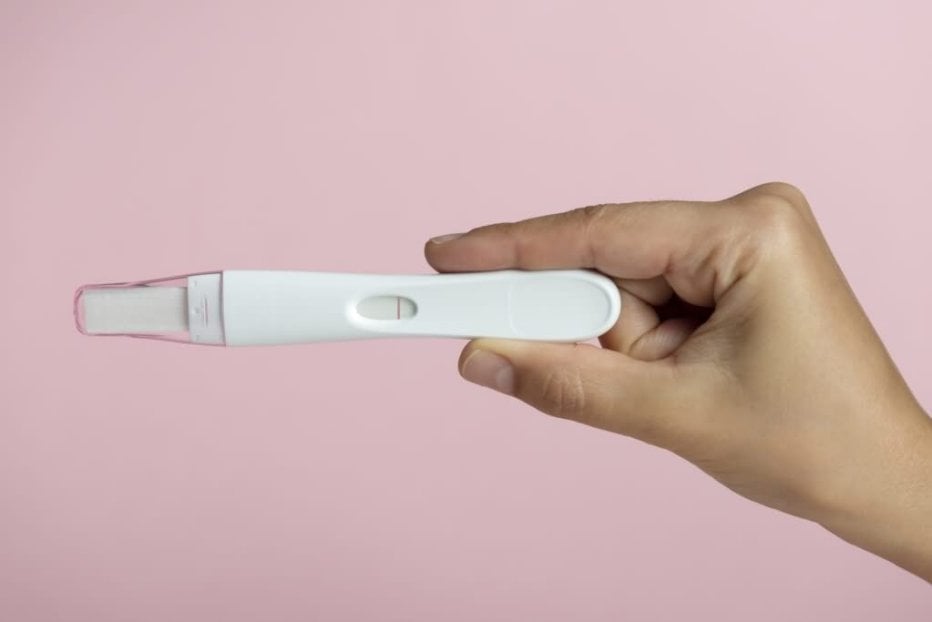Is Being a Firefighter Endangering Your Chances of Becoming a Parent?

While research on firefighting’s effect on fertility is in its infancy, patterns are emerging.
By Rick Markley, Science Alliance
Over the course of human evolution, we have always been fascinated by fire and fertility. Without the former, we wouldn’t have become what we are today. And without the latter, we wouldn’t be at all.
It’s no surprise then that from our cave-dwelling ancestors who painted fertility images on their walls to fertility cults and marriage rituals (some of which still exist) which invoked magic to thwart barrenness, to modern-day scientists who learned to freeze and implant sperm and egg cells, we’ve always been obsessed with rituals, potions, spells, art and science to enhance our fertility.
Fertility 101
When we talk about fertility, we are really talking about two things: getting pregnant and having a healthy child. A lot of good science has been done in both areas. Incense and incantations have been replaced with reliable recommendations based on tested and accepted scientific knowledge. For example, the renowned Mayo Clinic put together a list of risk factors and preventive measures for both men and women looking to have a baby.
Mayo pegs age as one of the important factors contributing to infertility in both men and women. Women’s fertility gradually declines in their mid-30s and drops rapidly after age 37, according to the clinic. This is likely due to the lower quantity and quality of eggs, and can also be due to health problems that affect fertility. Men may also become less fertile past age 40.
Tobacco use and pregnancy
The list also points to tobacco and alcohol use as risk factors in both men and women as well as being the case of women. Of course, exercise plays a role in preventing excess weight, but not all exercise is good for promoting fertility. “Ovulation problems may be associated with frequent strenuous, intense exercise in women who are not overweight,” according to the clinic. “Regular exercise is important, but exercising so intensely that your periods are infrequent or absent can affect fertility.” For women looking to become pregnant, the report recommends limiting caffeine.
The recommendations obviously include avoiding those risk factors. For men, it also lists avoiding high heat and toxic chemicals. Both can inhibit sperm production and both are mainstays on the fireground.
Of course, intense exercise is necessary to maintain the physical condition needed to do the job, and it is part of most working emergency scenes.
Just like our ancestors who had limited knowledge of how fertility works, we are working to understand fertility in the context of firefighting. Unlike the (male) ancients who pinned all the infertility blame on women, science has proven men to be just as capable of infertility. It is intuitive to believe that female firefighters have a more difficult time becoming pregnant and carrying their babies to full term than women outside the fire service. The early science says this intuition has merit.
What does science say about firefighter fertility?
The science on firefighter fertility is at both an exciting and a frustrating stage, says Sara Jahnke, a leading industry researcher who launched the Science to the Station: A Health & Wellness Alliance (or “Science Alliance” for short), a platform to bring important firefighter health and wellness science to firefighters. Jahnke has been at the forefront of much of that early research and she and her team are continuing to build and carry out new studies about firefighter fertility.
“It is exciting for us as researchers because we’re in the discovery stage,” she says. “There hasn’t been much work done in this field, and we get to chart the course for new research and build upon what earlier work exists. New discoveries are really new.”
Firefighters and fire department leaders need answers to set best practices and best policies, Jahnke says. “People need answers that we simply don’t have yet,” she says. “When it comes to research, it’s easy to fall into the trap of thinking because the 5 o’clock news reported that one study shows eating celery will grow tails on humans, therefore nobody should eat celery. Except those who want tails.”
“But science is a process, not an event. We have to make sure the data we collect is accurate, that it represents a large section of the population and that the findings are reproducible in other studies. That’s a long, sometimes frustrating process, but it also keeps us from wrongly eliminating celery from our diets.”
And that’s one of the common threads through much of the existing firefighter fertility research — that more research is needed. There are things, however, we can glean from the work that’s been done.
Way back in 1991, researchers led by Johns Hopkins University’s department of environmental health science looking at chemical exposure as a firefighter reproductive hazard reported:
“Reproductive risk to firefighters cannot be fully assessed because of the lack of adequate exposure data and the lack of adequate toxicity data to interpret it. Firefighters must be educated to the potential risks to reproductive health, as has occurred with other firefighting health hazards.”
“Risk reduction through minimization of exposure is the primary prevention strategy. Vigilant use of SCBA, especially during overhaul when exposure to off-gassing combustion products is high, takes on additional significance. Identifying potential hazards is the first step of a risk assessment determination. Worker education and administrative controls must be enacted in the short term to protect reproductive health while further studies are performed to assess more adequately the reproductive risk of firefighting.”
While more research has been done since then to accumulate exposure data and reproductive risks, much of the prevention advice from oh so long ago holds true today.
Fast forward to 2019 and Danish researchers who did some interesting work on male firefighter’s infertility. Denmark is one of a few countries with nationwide registers on infertility.
That study looked at 17,134 Danish firefighters and used two other groups for comparison — 49,971 general Danish workers and 177,034 military men.
“We found a clear indication of increased risk of male-factor infertility in the Danish full-time firefighters as compared with a sample of male employees,” the researchers wrote. “When comparing the full-time firefighters with military employees, results were more ambiguous. Using part-time/volunteer firefighters as the reference group, the increase in risk among the full-time firefighters seemed to be confined to their employed time at risk. The part-time/volunteer workers, who were presumably less firefighting-exposed, had no significant increase in risk of either male-factor infertility or overall infertility.”
In line with Mayo’s assessment, the Danish researchers pointed to heat stress as a leading cause of male firefighter infertility. They went on to identify chemical exposures as a second potential source.
“Several chemicals commonly present during firefighting operations have shown reproductive toxicity in males,” they wrote. “Among the exposures primarily relevant to firefighters, polychlorinated and polybrominated biphenyls, polycyclic aromatic hydrocarbons, benzene, trichloroethylene, vinyl chloride, perfluoroalkyl substances, cadmium, and lead are either known for or suspected of impairing male fertility.
“In addition, emotional trauma or stress added through unpredictable rescue assignments may reduce male testosterone levels, weaken the libido, or ultimately cause impotence. Exposure to noise, physical exertion, and night work have also been suggested as contributing factors.”
Science Alliance’s Jahnke was part of a team of researchers who published findings in 2022 that compared levels of Anti-Mullerian Hormones (AMH) in both female firefighters and female civilians with no firefighting background. AMH levels typically increase until a woman reaches 25-years-old, after which they begin to steadily fall. AMH levels are one way doctors measure how responsive women are to fertility treatments.
This work, like much of the research into firefighter fertility, is in the early stages and had a relatively small sample of 106 firefighters and 58 civilian women; however the team found firefighters’ AMH to be 33 percent lower than nonfirefighters. More research will need to explore why these levels were lower. When the team checked for things like number of live fires attended or ill-fitting PPE, they found nothing statistically significant.
For female firefighters, arguably the biggest risk is once they’ve become pregnant. Firefighting poses risks to both their and the baby’s health. And this aspect of firefighter fertility has both administrative and occupational forces at work.
On the administrative side, Jahnke and her team found that many career female firefighters were unaware if their department had a pregnancy policy, or were aware that one definitely did not exist. Collectively, that came to 42 percent.
“We found that 24 percent of female firefighters said they know for sure there is no policy,” Jahnke says. “With many departments having few or no female firefighters, it is understandable how that could have been overlooked. But, we need to plan for a future with more female firefighters. There are plenty of template policies out there that can be adapted. This is low-hanging fruit for fire department leaders that will make their departments more attractive to female candidates, healthier for female firefighters and more provide the departments with more protection from discrimination claims.”
Jahnke also uncovered some unsettling health concerns for pregnant firefighters.
The rate of spontaneous abortions across pregnancies while in the fire service was 27 percent (29 percent when adjusted for age). This comes from a 2018 study that looked at data from 1,779 career female firefighters.
The American College of Obstetricians and Gynecologists, by comparison, estimates as many as 26 percent of all pregnancies in the U.S. end in miscarriage, and that it is the most common form of pregnancy loss. Another study puts the rate between 11 and 22 percent.
Jahnke’s research found that working night shifts and undertaking heavy lifting, both part of a firefighter’s job description, were related to increased risk of miscarriage. Environmental toxins present in the occupational environment also increase risk of miscarriage. In short, those things that can prevent you from becoming pregnant can also terminate your pregnancy.
Another study from Jahnke’s team in collaboration with researchers from the University of Arizona published in 2021 included volunteer firefighters in the mix. It reported that of 1,864 total pregnancies, 404 pregnancies resulted in miscarriages (22 percent). Among most recent pregnancies, 138 resulted in miscarriage (13 percent). Compared to a study of U.S. nurses, firefighters had 2.33 times greater age-standardized prevalence of miscarriage.
“Overall, we observed that volunteer firefighters had an increased risk of miscarriage, which varied by wildland status,” the authors wrote. “Among structural firefighters, volunteer firefighters had 1.42 times the risk of miscarriage compared to career firefighters. Among wildland/wildland-urban-interface firefighters, volunteer firefighters had 2.53 times the risk of miscarriage compared to career firefighters.”
The other risk is that the pregnant firefighter does not make it to full term before delivering her baby.
“One reported birth outcome that was higher when compared to the general population was preterm births,” Jahnke and her team wrote. “While reported rates of preterm (less than 37 weeks) birth ranged from 11.6 percent to 16.7 percent (second and fourth pregnancies respectively) for pregnancies occurring while in the fire service, the prevalence nationally is 9.6 percent across pregnancies.”
If we’re going to protect our firefighters, we’ll need continued research into our oldest fascination. And we’ll need to set aside old ways of thinking and adopt science-based best practices that will improve both male and female firefighters’ chances of conceiving and having healthy babies.
INFO BOX: For more information on the Science Alliance and to access this and other firefighter health and wellness research findings, visit https://science-alliance.org/
Podcast
Contests & Promotions
















